Introduction: A Look at the Adaptive Clothing Market
Inclusive clothing refers to categories of apparel that serve needs not met by traditional fashions. Clothing specifically designed to help individuals with disabilities dress and live with more independence is often called “stress-free” or “adaptive” clothing, but the inclusive clothing category encompasses plus-size and extended-size apparel, too.
Coresight Research estimates that the potential market for adaptive clothing, accessories and footwear designed for individuals with disabilities will be worth approximately $278.2billion globally and approximately $44.5 billion in the US in 2018.Our figures represent total estimated sales of clothing and footwear to consumers with disabilities, whether those items are specially adapted or not.
The market for adaptive clothing designs includes individuals with disabilities; individuals with mobility, sensory or motor processing difficulties; and those who are undergoing various medical treatments. According to the World Health Organization’s 2011
World Report on Disability, around 785 million people aged 15 and older globally, or 15.6% of the world’s population, have a disability.
Based on that estimate and Euromonitor International’s estimate of the size of the global apparel market, Coresight Research estimates that the global market for adaptive apparel, accessories and footwear will total $278.2billion in 2018 and grow to $325.8 billion by 2022 (our estimates are conservative because the World Health Organization’s figures do not include children with disabilities under the age of 15).
 Source: Euromonitor International/Coresight Research
Source: Euromonitor International/Coresight Research
According to the US Census Bureau’s
American Community Survey, more than 40 million Americans, or 12.6% of the US population, reported that they had a disability in 2016. Based on that figure and Euromonitor International’s estimate of the size of the US apparel market, we estimate that the adaptive clothing market in the US will reach approximately $44.5 billion this year and grow to $51.1 billion by 2022.
 Source: Euromonitor International/Coresight Research
Source: Euromonitor International/Coresight Research
In its survey, the US Census Bureau defines disability status through six types of questions measuring serious difficulty with hearing, vision, cognition, walking or climbing stairs, and difficulty with self-care and independent living. Of the 40 million Americans who reported having a disability in 2016, more than 14 million said that they had difficulties with daily living activities such as dressing. In addition, nearly half of those surveyed over the age of 75 reported having a disability.
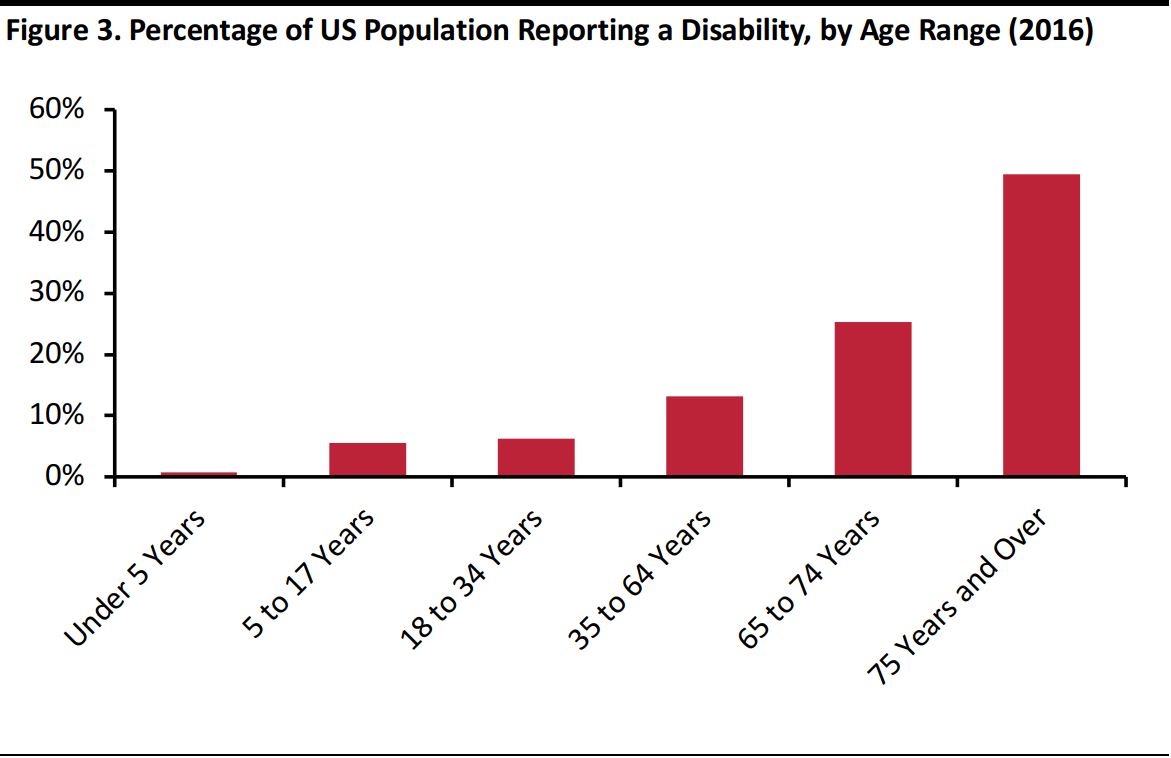 Source: US Census Bureau
Source: US Census Bureau
Adaptive Clothing Needs of Those Being Treated for Chronic Disease
Chronic disease is the leading cause of death and disability in the US, according to the CDC. As of 2012, about half of American adults, or 117 million people, had one or more chronic health conditions such as arthritis, cancer or heart disease and one in four adults had two or more chronic health conditions,according to the CDC data.There is ample opportunity to design everyday clothing that fits the needs of individuals receiving treatment for chronic diseases such as cancer.
The CDC reports that more than 54 million Americans have been diagnosed with arthritis, more than 1 million with Parkinson’s disease and 30,000 with amyotrophic lateral sclerosis (ALS). More than 23 million of those diagnosed with arthritis say that they have trouble with their usual activities because of arthritis, and it is the most common cause of disability.
According to the American Cancer Society, there are an estimated 1,735,350 new cases of cancer diagnosed every year across the four major cancer types: colon, lung, breast/female and prostate.
The CDC reports that 30.3 million Americans had diabetes in 2015. Diabetes is the leading cause of kidney failure, lower-limb amputations other than those caused by injury, and new cases of blindness among adults, according to the CDC. In September 2017, an online survey commissioned by Virta Health found that almost 40% of the 1,000 individuals surveyed who are living with type 2 diabetes said that they felt “moderate or extreme anxiety” about giving themselves daily insulin shots.
Individuals living with these kinds of chronic diseases—including those receiving outpatient treatments for chemotherapy and those who give themselves insulin for diabetes—often have specific clothing needs that traditional fashions do not meet.
Companies and Designers Addressing the Adaptive Clothing Market
In response to these unmet needs, a number of companies are now designing adaptive clothing to improve quality of life for people who have been diagnosed with a disability or chronic disease. One such company, Care+Wear, is creating clothing with fashionable openings, zippers, pockets and special sleeves that enable wearers to receive certain medical treatments without having to entirely disrobe.
Care+Wear: Offering Arm Covers for PICC Lines and Apparel with Accessible Zippers for Port Lines
Care+Wear makes what it calls “healthwear,” clothing specifically designed to improve people’s health experiences as they receive various medical treatments. The company was founded in 2014, after the founders watched a close friend who was receiving chemotherapy treatment use “a mesh tube sock” to cover a peripherally inserted central catheter (PICC) line in his arm. These lines are inserted in a peripheral vein in the arm and some remain in place for an extended period of time. Patients undergoing chemotherapy and other intravenous treatments cover them in order to help protect the lines from outside agents that could lead to infection. Care+Wear Founder Chat Razdan saw his friend wearing the tube sock and thought to himself, “There has to be a better way.”
So, the company set out to create arm covers that are antimicrobial, machine-washable, soft and breathable. Care+Wear created various versions of the covers in multiple colors, and now even offers versions with sports team logos. The PICC line covers are designed to be seen as sportswear.
 Care+Wear PICC Line Covers
Source: CareandWear.com
Care+Wear PICC Line Covers
Source: CareandWear.com
Care+Wear also created a fashionable shirt that has a special zipper allowing access to a chest port line; the zipper enables clinicians to access a patient’s chest port without the patient needing to fully disrobe. The shirts are Oscar de la Renta designs, and were cocreated using a comprehensive design process that Care+Wear adopted after working at the Open Style Lab at Parsons School of Design, which is part of The New School in New York City. Razdan said, “Typically, when you have patients design things, [they] tend to put Velcro in designs. When clinicians make things, they look awful but are very practical. Designers tend to feature things that are too expensive.” Care+Wear aims to bring together the perspectives of patients, clinicians and designers to create functional, fashionable, cost-efficient healthwear.
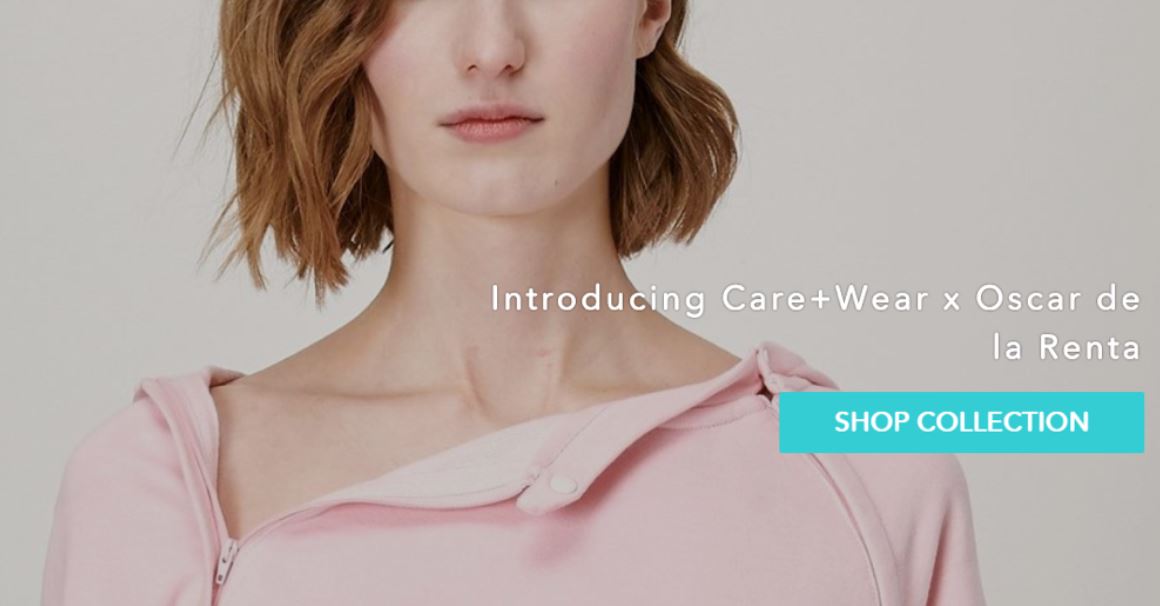 Care+Wear x Oscar de la RentaChest Access Hoodie
Source: CareandWear.com
Care+Wear x Oscar de la RentaChest Access Hoodie
Source: CareandWear.com
Care+Wear currently sells its products to both consumers and businesses. The company is working on designs for premature babies and has just launched a collaboration with inclusive designer Lucy Jones to offer mobility gloves for users of mobility devices such as wheelchairs, scooters, walkers and crutches. (We discuss Jones’s designs in more detail later in this report.)
While Care+Wear is focusing on specific healthwear needs, to date, few mainstream retailers have offered adaptive clothing or accessories in stores, and many consumers have complained that, even at stores that specialize in adaptive clothing, the items offered are not fashionable or stylish enough. The most common critique is that the clothing is designed to serve a functional purpose, but not necessarily to look nice.
Over the past year, however, inclusive design and adaptive fashion have been gaining more traction and press attention. Two major mainstream retailers, Target and Zappos, have launched adaptive clothing and footwear lines, and a new online department store called Patti + Ricky, which has been described as “Etsy for inclusion,” has launched a marketplace that features products from more than 35 brands. Patti + Ricky plans to launch its first pop-up store, in New York City, for a limited time in July 2018.

Target: Offering Sensory-Friendly and Other Adaptive Clothing Items
In October 2017, Target launched a collection of 40 adaptive clothing items under its Cat & Jack children’s brand. Many of the items are designed to be more comfortable for kids with sensory issues. For example, they feature ultrasoft fabrics, flat seams and no scratchy tags (Target also offers a range of Sensory Friendly items for adults). Other garments feature side and back snaps or zipper closures designed to ease the dressing process for children with a variety of special needs. The children’s collection also includes leggings for older children with more room in the hip and waist to accommodate diapers and outerwear with zip-off sleeves.
Zappos Adaptive: “Functional and Fashionable Products to Make Life Easier”
Zappos launched an adaptive apparel and shoe line in 2017 that includes products for adults and children. The line features items such as pull-on pants and orthotic-friendly shoes that are easy to put on and take off.
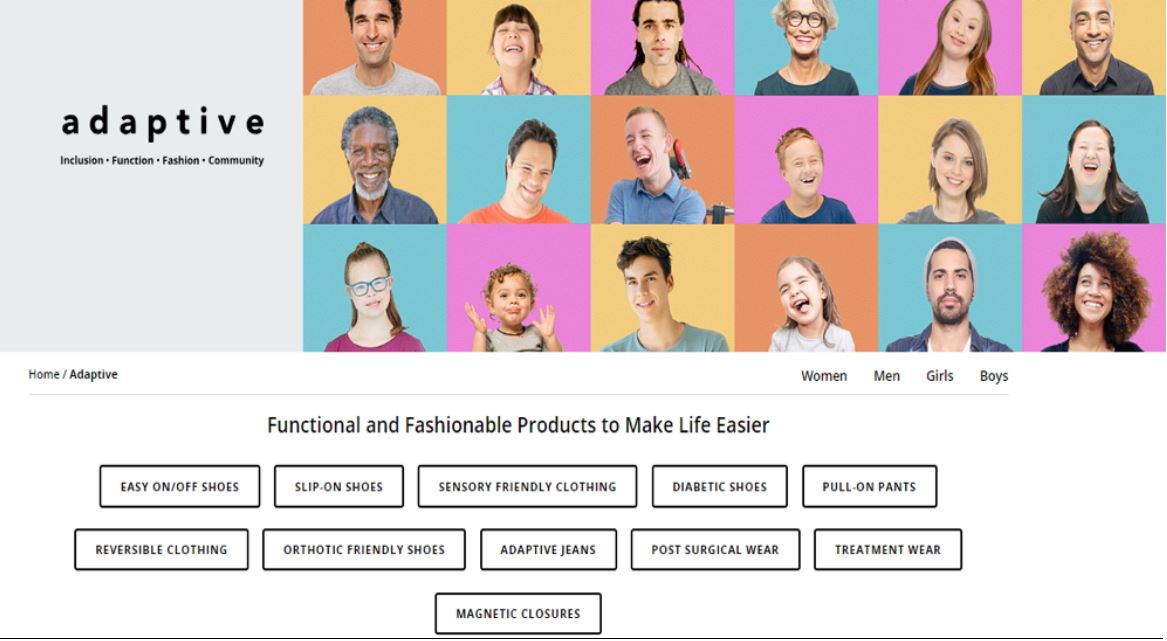 Source: Zappos.com
Source: Zappos.com
The Zappos Adaptive line includes items across 11 categories: easy on/off shoes, slip-on shoes, sensory-friendly clothing, diabetic shoes, pull-on pants, reversible clothing, orthotic-friendly shoes, adaptive jeans, post surgical wear, treatment wear and magnetic closures. Zappos has collaborated with a variety of brands on the adaptive clothing line. For example, the company partnered with PBS to bring customers children’s sleepwear with dissolving tags and no buttons, in order to make sleeping as comfortable as possible for all children, and especially for those with sensory needs.
 Source: Zappos.com
Source: Zappos.com
Patti + Ricky: Online Department Store for People with Disabilities
In 2017, Alexandra Connell launched PattiandRicky.com, an online platform specializing in apparel and accessories for individuals with special needs. The brand is a tribute to her mother, Patti, who died 10 years ago, and her cousin Ricky, who was unable to walk or speak. Connell has said that when her mom was sick with brain cancer, one thing she wanted was a fancy, leopard-print cane. Connell was unable to find one on the market, but she did find a rose-print cane at a medical supply company. She gave the cane to Patti, and Patti received so much positive attention when using it that the conversation shifted to “how cool the cane was” instead of being focused on her illness. Connell said that the experience helped her realize the power of fashion in improving mood, reactions and perceptions.
The Patti + Ricky online department store currently features over 35 brands and designers and sells items for individuals of all ages. The site’s offerings range from clothing, jewelry, supplement sprays and eye patches to items for people who use wheelchairs and those with visual or hearing impairments. For example, Patti + Ricky features jewelry printed with words in braille, crutch pads in different patterns and even ear cuffs designed to “bling out” the wearer’s hearing aid.
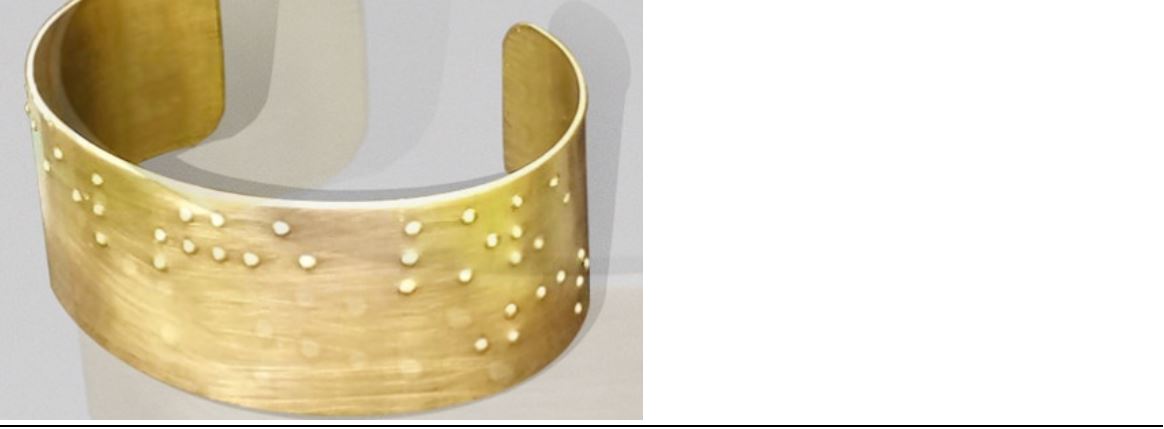 A cuff bracelet that reads “feel the love” in braille
Source: PattiandRicky.com
A cuff bracelet that reads “feel the love” in braille
Source: PattiandRicky.com
 Cheetah Forearm Crutch Pads by Crutcheze
Source: PattiandRicky.com
Cheetah Forearm Crutch Pads by Crutcheze
Source: PattiandRicky.com
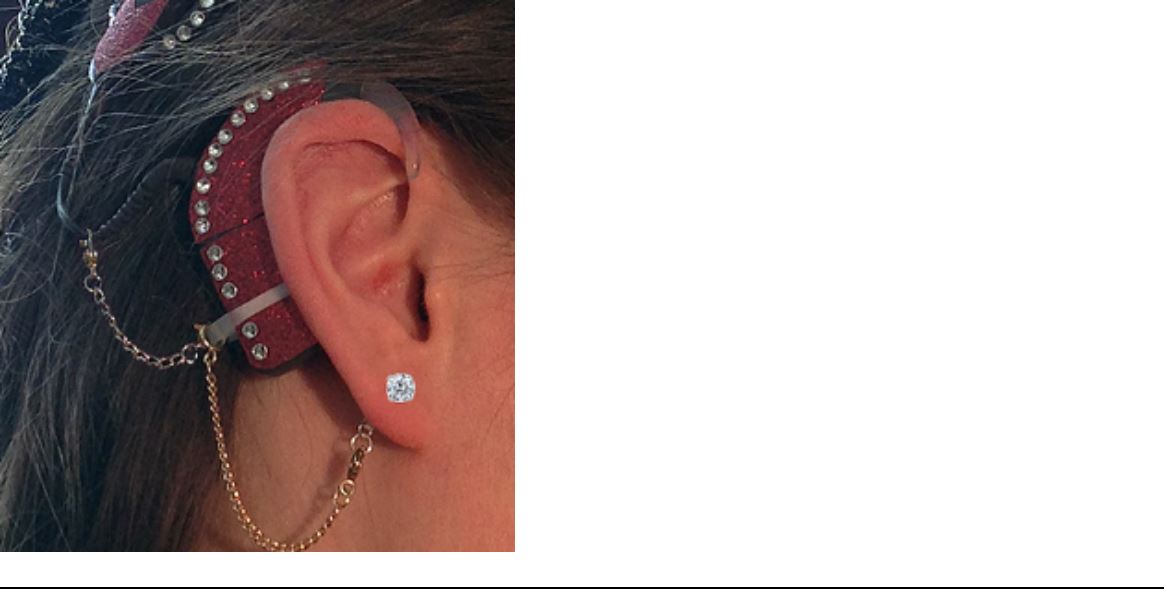 Pierced stud earring for hearing aids
Source: PattiandRicky.com
Pierced stud earring for hearing aids
Source: PattiandRicky.com
Patti + Ricky plans to open a pop-up store in Manhattan in July 2018. Connell is also seeking to work with retailers and department stores to launch a store-in-store concept that will provide one-stop-shopping convenience to shoppers seeking on-trend, fun and innovative inclusive designs.
Other designers and brands are emerging to solve consumers’ specific adaptive clothing needs. Nearly all the adaptive clothing designers we interviewed for this report said that they initially created their designs to solve a unique problem that someone they knew was facing.Some said that they had no intention of creating a business initially, but later realized that their designs would be welcomed by many other people facing the same challenge as their loved one.
FFORA: Gloves and Bags for Wheelchair Users
Lucy Jones, Founder and CEO of FFORA (short for “Fashion for All”), a fashion and lifestyle brand created to meet the needs of those with disabilities, said that her company creates products with a “disability first” focus and that high-level function goes hand in hand with high-level aesthetics. FFORA participated in the XRC Labs accelerator program and has created a collection of stylish accessories and products for wheelchair users.
FFORA developed a design approach called Seated Design, which is a “method of analyzing our existing design infrastructure and encouraging implementation of functional, attractive and more comfortable design solutions for seated individuals.” Jones collaborates closely with the disability community to create fashion products and said that “it is vital that disability is involved not only in the design process, but also [in] every aspect of our company, including employment.”
Jones has been widely recognized for her adaptive designs and won the
Parsons School of Design’s Womenswear Designer of the Year award in 2015 for her Seated Design collection. She was also commissioned to prototype a pair of “seated pantyhose” for
MoMA’s second fashion exhibition.
Most recently, Jones collaborated with Care+Wear to create Care+Wear x Lucy Jones Mobility Gloves for wheelchair and other mobility device users. The gloves protect the hands while providing functionality and style and are easy to put on and take off.
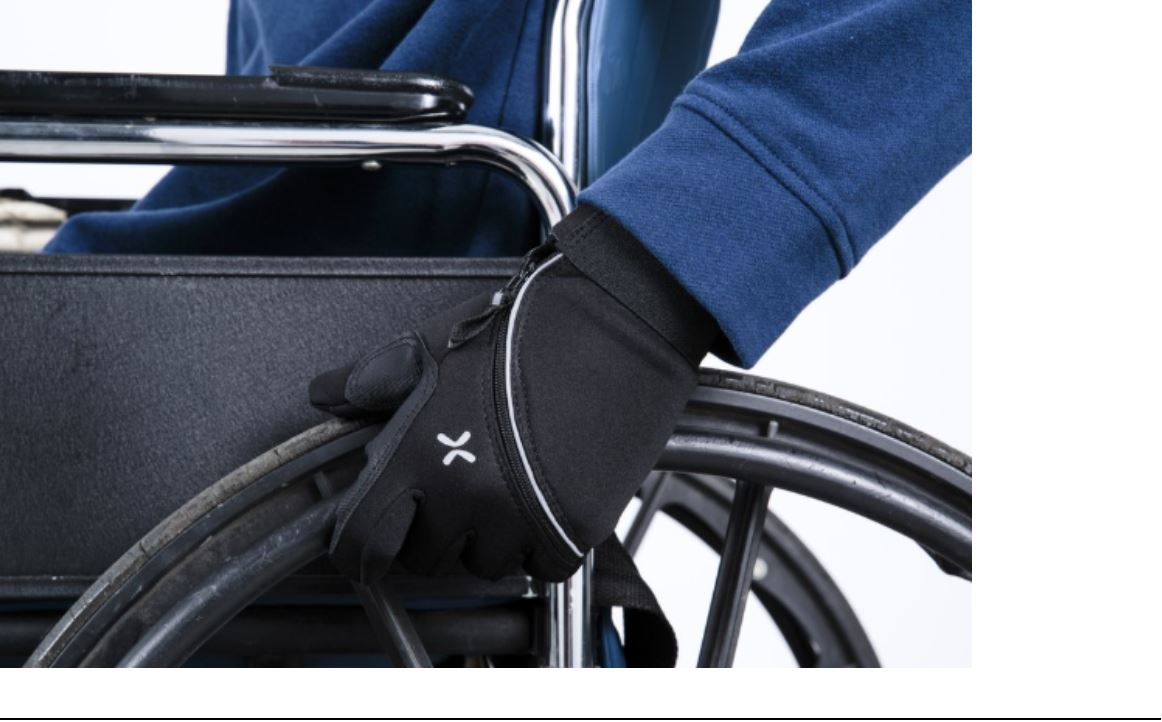 Care+Wear x Lucy Jones Mobility Gloves
Source: CareandWear.com
Care+Wear x Lucy Jones Mobility Gloves
Source: CareandWear.com
MagnaReady: Magnetic Closures for Apparel
Maura Horton founded the MagnaReady brand after creating patented magnetic closures for clothing to help her husband as he dealt with symptoms related to Parkinson’s disease. Horton set out to create a men’s dress shirt that used magnets instead of buttons as fasteners. A former children’s clothing designer, she experimented over months to find the right combination of magnet strength and fabric thickness that would allow her husband to fasten the shirt easily and the closure to hold tightly. Her design also ensured that the shirt could be washed without the magnets corroding. Horton’s patented designs enable consumers who have difficulty buttoning garments to easily put on and take off shirts independently, and the shirts look no different from any other traditional style.
Horton said that she never intended to start a business, and only decided to when she saw how many other people could benefit from her shirt design. She said that 68% of MagnaReady customers now refer a friend to the brand after their first purchase.
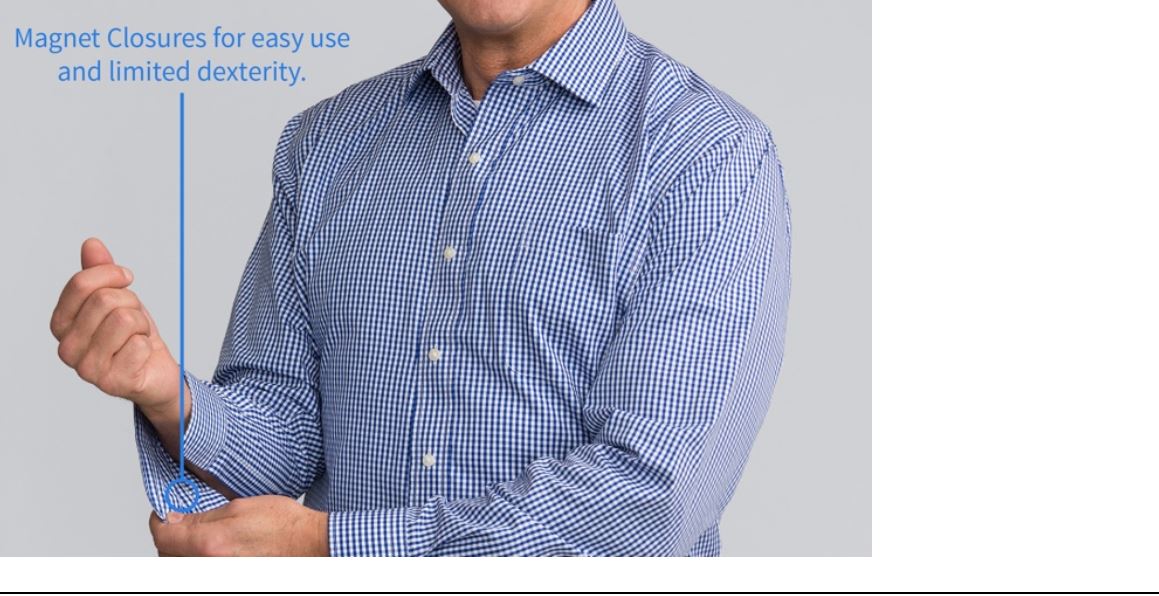 MagnaReady Long Sleeve Shirt with Magnetic Closures
Source: MagnaReady.com
MagnaReady Long Sleeve Shirt with Magnetic Closures
Source: MagnaReady.com
MagnaReady partnered with
Li & Fung on licensing its patented adaptive clothing. Shelly Fogel, EVP of Menswear for LF Americas, a division of Li & Fung, said that more than 95% of retailers that see the product order it and that the brand has orders with more than 20 channels spanning every major department store and specialty store in the US. Today, Horton’s adaptive clothing designs are available at
MagnaReady.com and at retailers such as Macy’s, Amazon, Men’s Warehouse, JCPenney and Kohl’s.
Ve°: Universal Design Platform
Camila Chiriboga, an adaptive fashion designer, created a universal design platform called Ve° “to serve as a tool to empower peoples’ unique abilities, allowing them to become more independent and inspire others towards a more inclusive universal design.” After studying the principles of design for special needs and user-centered design at Open Style Lab, Chiriboga created her own collection of designs for people who are blind or visually impaired. The clothing is designed to help wearers understand what they are wearing, choose clothes more easily and feel confident in how they look.
Chiriboga worked with three visually impaired individuals at Visions at Selis Manor, an adapted learning environment and meeting place for blind youth, adults and seniors in New York, to understand what they needed in terms of adaptive clothing. She discovered that there are three primary factors that affect how people with visual impairments get dressed—identification, interaction and safety—and she created a list of eight guidelines that designers should follow when creating clothing for them.
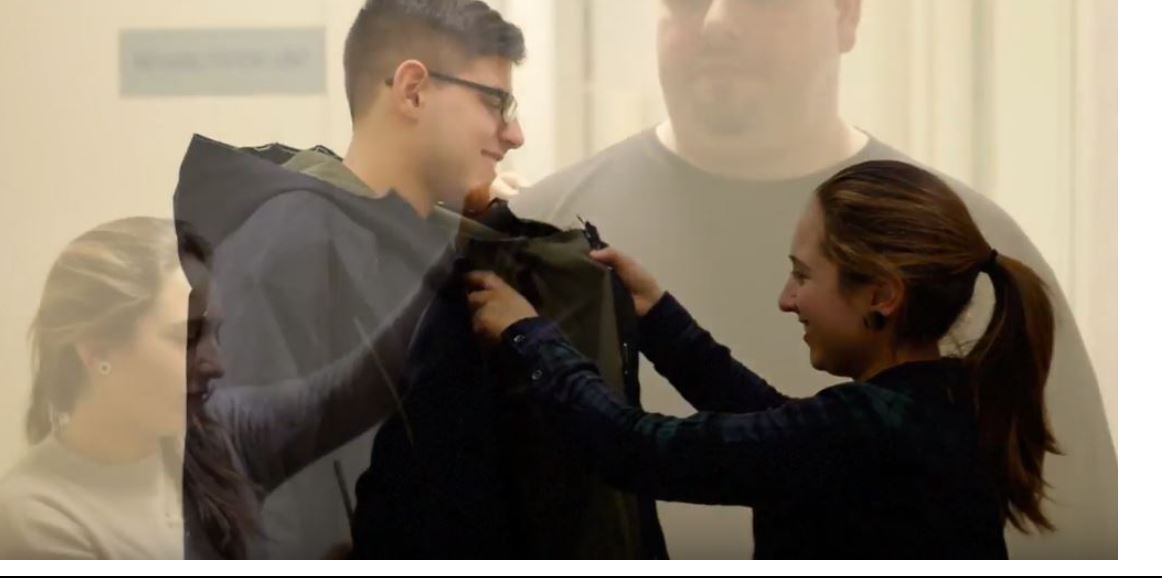 Camila Chiriboga in a design fitting with a client
Source: Fashion Foresight: Tech-Infused Fashion for the Blind
Camila Chiriboga in a design fitting with a client
Source: Fashion Foresight: Tech-Infused Fashion for the Blind
Chiriboga said that, at first, her clients were offended and did not understand what she was doing at Visions at Selis Manor, but that once she started asking questions about the clothing issues they dealt with when getting dressed and going throughout their day, they started to open up to her. For example, her clients revealed that having buttons and textures placed in a certain way on garments could be helpful to them. She compared her clients’ experience with her adaptive designs to having a cell phone, saying, “You do not know how much it helps your life until you have it.”
Chiriboga hired photographer Andres Burgos, whose work has appeared in
Vogue, to shoot photos of the final products she had designed, and she said that her clients were extremely proud of their clothes and that a fashion designer had paid attention to them and made something specifically for them. Chiriboga partnered with the AARP on a Webby Award–nominated video called
Fashion Foresight: Tech-Infused Fashion for the Blind that chronicles her experience designing inclusive clothing.
How Educational Institutions Are Addressing the Adaptive Clothing Market
Educational platforms such as Open Style Lab are partnering with various communities to help address the wearables needs of individuals with disabilities. Open Style Lab is renowned for cultivating designs that incorporate various schools of thought and put the wearer at the center of the design process.
Universities and startup accelerators are also recognizing the opportunity represented by adaptive design, inclusivity and the body positivity movement. New York University (NYU) has offered an educational series, Give Beauty Wings, that is devoted to body positivity and was developed by advocate Xian Horn. The Open Style Lab and NYU’s Give Beauty Wingsseries are both being credited with helping to inspire innovation in the adaptive clothing market and promote designs that help people with disabilities dress with style, comfort and confidence.
Open Style Lab: Offering a 10-Week Research Program to Design and Prototype Wearable Solutions for People of All Abilities
Open Style Lab, founded in 2014, is devoted “to creating technology-based wearable solutions for people of all abilities without compromising on style.” The organization brings together designers, engineers and occupational therapists to create and build accessible wearables that address the needs of people with different kinds of disabilities.
Grace Jun, Executive Director of Open Style Lab, said that the organization works with individuals to make style accessible to everyone. Jun teaches her students the principles of open, inclusive design and is working with people who are seeking adaptive clothing solutions. Open Style Lab runs annual 10-week research programs in which 18–24 research fellows are paired with carefully selected clients. The goal is for the designers to create functional yet stylish wearables for people with disabilities. Jun said that she spends months interviewing clients to be paired up with her students.
Much of the 10-week program focuses on understanding the clients’ needs, Jun said. In order to do that, students spend time with the clients, accompany them to work and see how they spend their day. She said that one of her student’s clients was a doctor who wore scrubs every day to work. By the end of the day, the bottom of his pant legs were dirty and frayed from traveling on the subway through New York City. By experiencing the doctor’s journey with him, the student was able to better understand the doctor’s personalized needs, Jun said.
Open Style Lab is currently partnering with Woolmark, Polartec, the Christopher & Dana Reeve Foundation, Boston’s Museum of Science, MIT Museum, Parsons School of Design and Raw Haus.
Give Beauty Wings: Education Platform Promoting Positivity
Xian Horn, who was born with cerebral palsy, has become an advocate for body positivity. Horn created a series of workshops at NYU Lan for Women with Disabilities to encourage students to share their ideas about beauty, body image, fashion and disability in personal and professional ways. She has become an icon in the world of body positivity and said that her journey since creating her first self-esteem curriculum in 2011 has been a fascinating one.
Horn said that when NYU first approached her about the classes, she thought, “Well, I have never done this before, but I am sure I can do it.” She said, “The one thing I have always felt confident about in my life is my disability.” Horn was an actress at the time, and knew of many women who were writing in journals about how much they hated themselves and hated their bodies. “These were very accomplished women,” she said. Horn thought to herself, “The conversation has to change. I felt that this was my calling.” In addition to the body positivity classes offered at NYU, Horn’s Give Beauty Wings workshops are offered at schools and organizations throughout New York City. Horn encourages her students to express themselves positively with confidence and to view their personal style as a reflection of themselves.
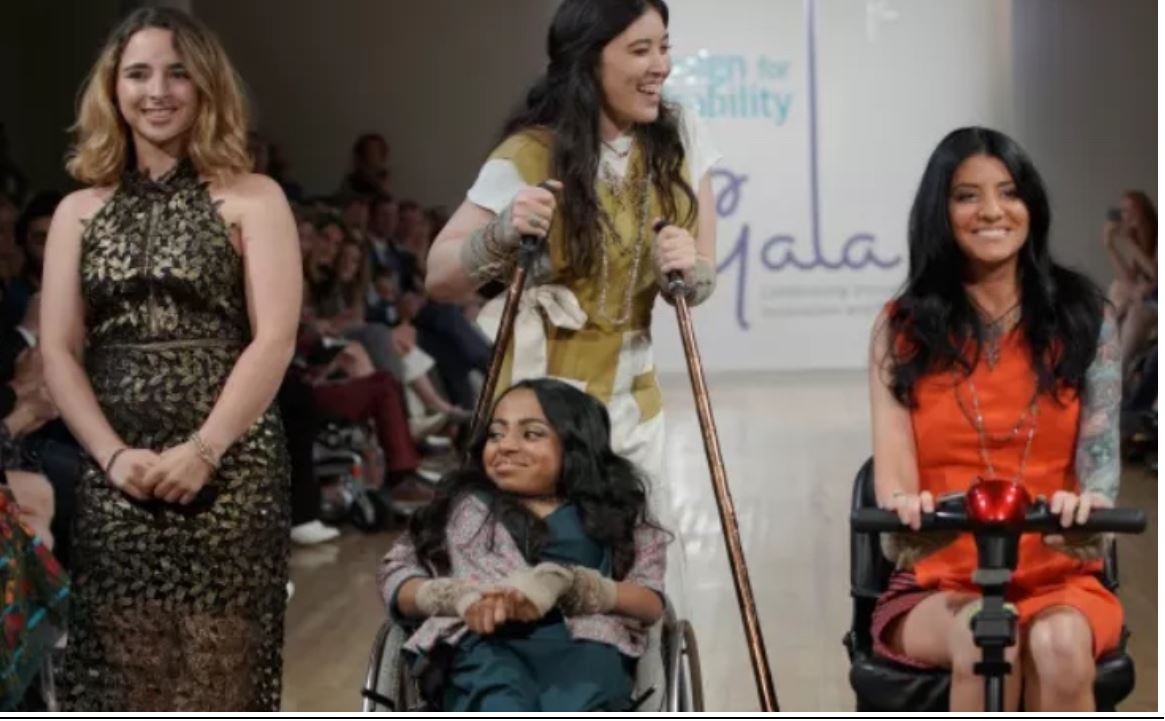 Designer Maria Terracina with models Xian Horn, Shashi Bangere and Bernadette Scarduzio at the Cerebral Palsy Foundation’s third annual Design for Disability Fashion Show
Source: Richard Copier
Designer Maria Terracina with models Xian Horn, Shashi Bangere and Bernadette Scarduzio at the Cerebral Palsy Foundation’s third annual Design for Disability Fashion Show
Source: Richard Copier
Horn recently modeled in the Cerebral Palsy Foundation’s third annual Design for Disability Fashion Show, which featured designs by five students from Parsons School of Design, Pratt Institute and the Fashion Institute of Technology. Womenswear luxury designer Anna Sui was the design mentor for this year’s event, and Horn said that Sui had worked closely with clients to explore new fashion opportunities to better serve those with disabilities, with a focus on fit, closures and durability.
Looking Forward: Retail Has an Opportunity to Positively Impact Lives
According to the US Census Bureau, more than 40 million Americans have disabilities. In recent years, a number of startups and designers have emerged to focus on the specific adaptive clothing needs of those with various disabilities and conditions. Some major retailers have also begun offering adaptive clothing lines. Meanwhile, some educational institutions have begun offering programs that focus on inclusive design. However, the adaptive clothing market remains underserved.
Designers and retailers that take the opportunity to address this market could not only generate a positive social and economic impact, but also gain first-mover advantage by becoming the “go to” provider of certain adaptive clothing styles. We expect this category to continue to grow as designers and retailers focus more on meeting the apparel needs of all communities by creating inclusive designs that incorporate both function and fashion.
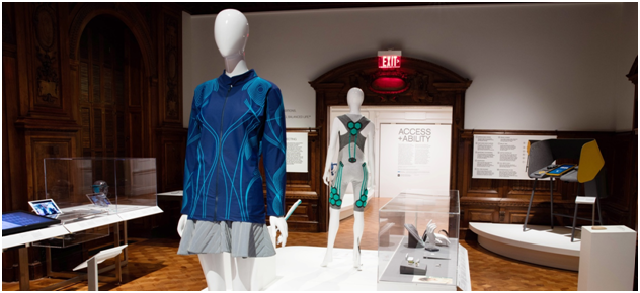
 Source: Euromonitor International/Coresight Research
Source: Euromonitor International/Coresight Research Source: Euromonitor International/Coresight Research
Source: Euromonitor International/Coresight Research Source: US Census Bureau
Source: US Census Bureau Care+Wear PICC Line Covers
Source: CareandWear.com
Care+Wear PICC Line Covers
Source: CareandWear.com Care+Wear x Oscar de la RentaChest Access Hoodie
Source: CareandWear.com
Care+Wear x Oscar de la RentaChest Access Hoodie
Source: CareandWear.com
 Source: Zappos.com
Source: Zappos.com Source: Zappos.com
Source: Zappos.com A cuff bracelet that reads “feel the love” in braille
Source: PattiandRicky.com
A cuff bracelet that reads “feel the love” in braille
Source: PattiandRicky.com Cheetah Forearm Crutch Pads by Crutcheze
Source: PattiandRicky.com
Cheetah Forearm Crutch Pads by Crutcheze
Source: PattiandRicky.com Pierced stud earring for hearing aids
Source: PattiandRicky.com
Pierced stud earring for hearing aids
Source: PattiandRicky.com Care+Wear x Lucy Jones Mobility Gloves
Source: CareandWear.com
Care+Wear x Lucy Jones Mobility Gloves
Source: CareandWear.com MagnaReady Long Sleeve Shirt with Magnetic Closures
Source: MagnaReady.com
MagnaReady Long Sleeve Shirt with Magnetic Closures
Source: MagnaReady.com Camila Chiriboga in a design fitting with a client
Source: Fashion Foresight: Tech-Infused Fashion for the Blind
Camila Chiriboga in a design fitting with a client
Source: Fashion Foresight: Tech-Infused Fashion for the Blind Designer Maria Terracina with models Xian Horn, Shashi Bangere and Bernadette Scarduzio at the Cerebral Palsy Foundation’s third annual Design for Disability Fashion Show
Source: Richard Copier
Designer Maria Terracina with models Xian Horn, Shashi Bangere and Bernadette Scarduzio at the Cerebral Palsy Foundation’s third annual Design for Disability Fashion Show
Source: Richard Copier